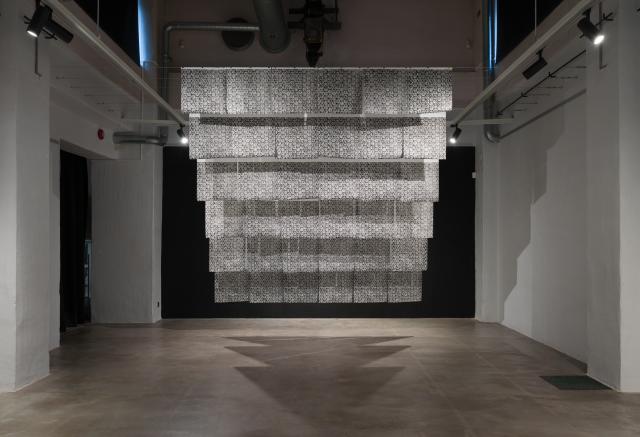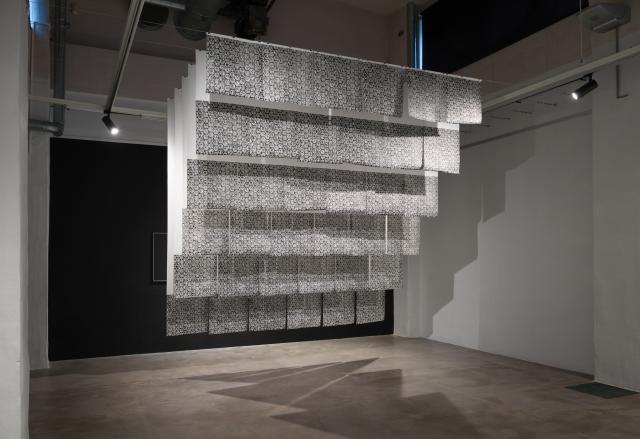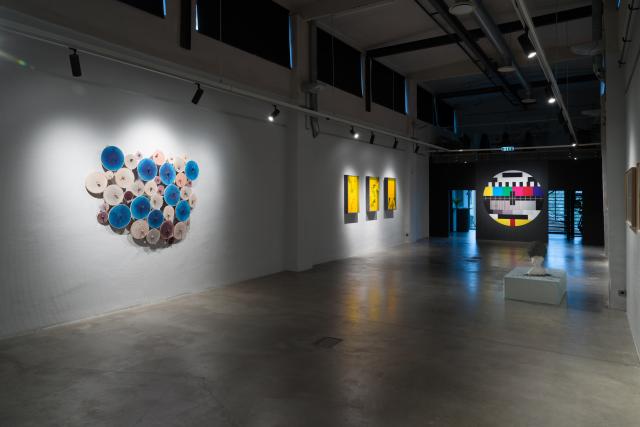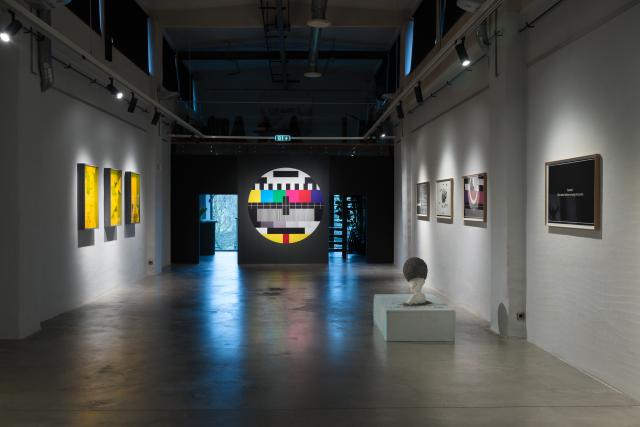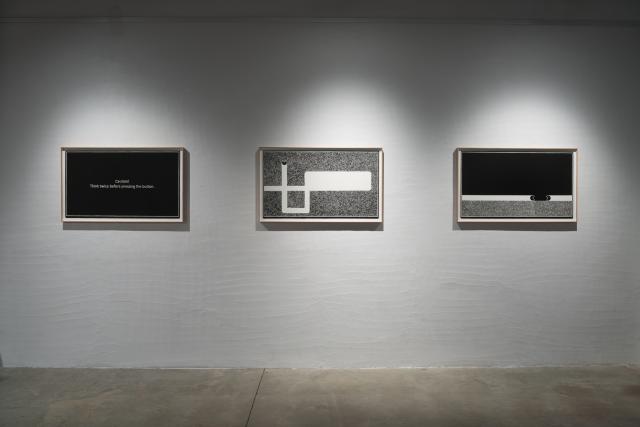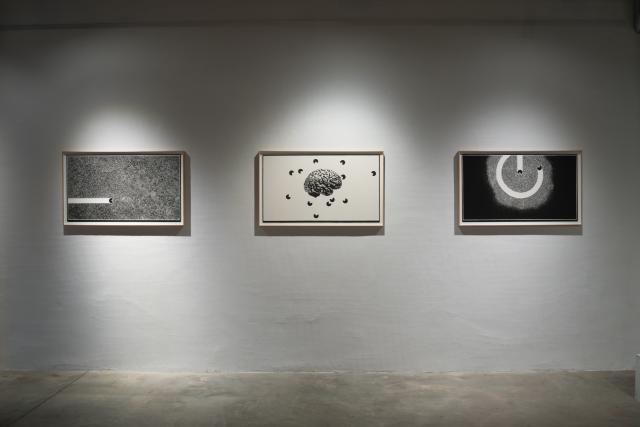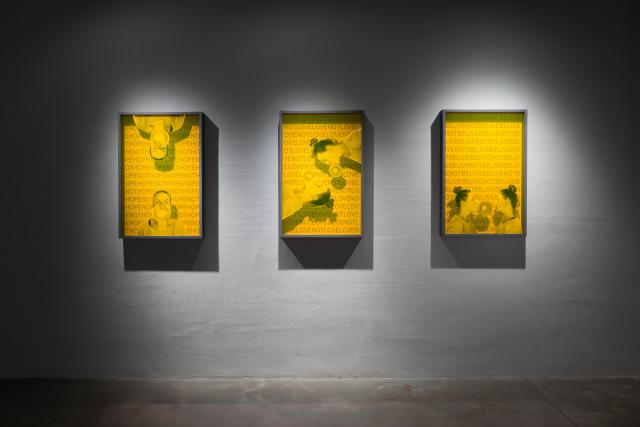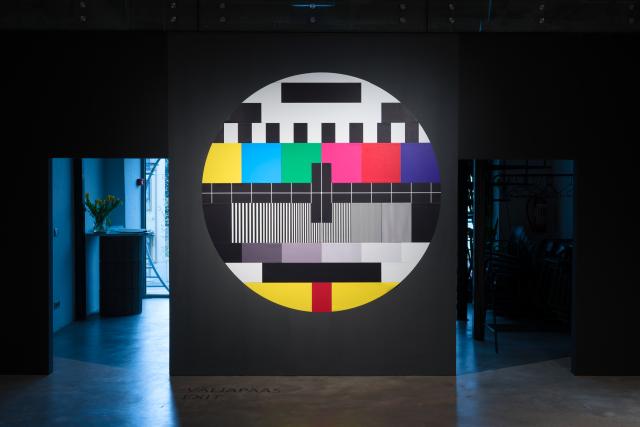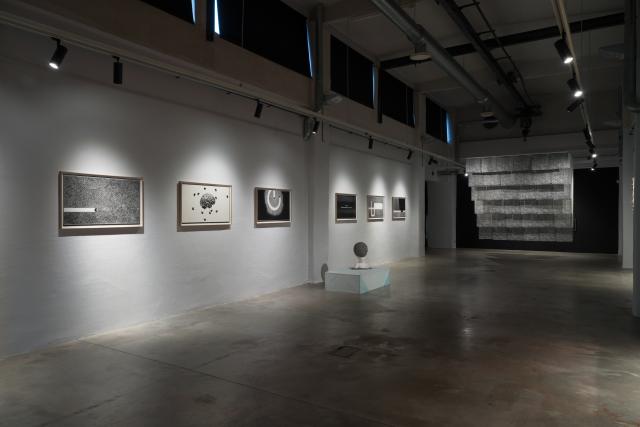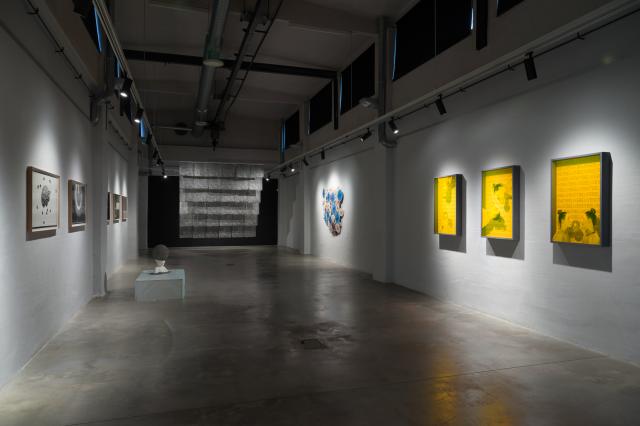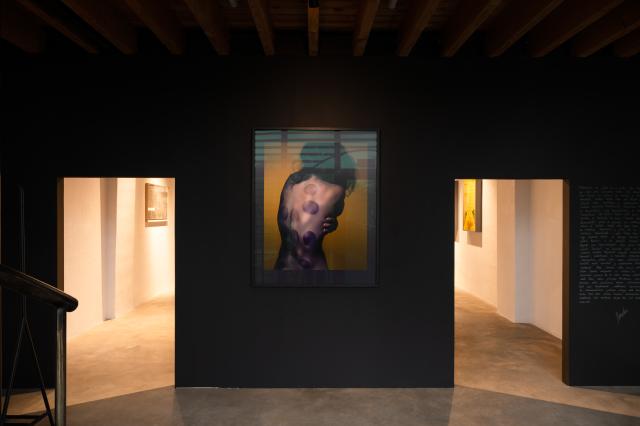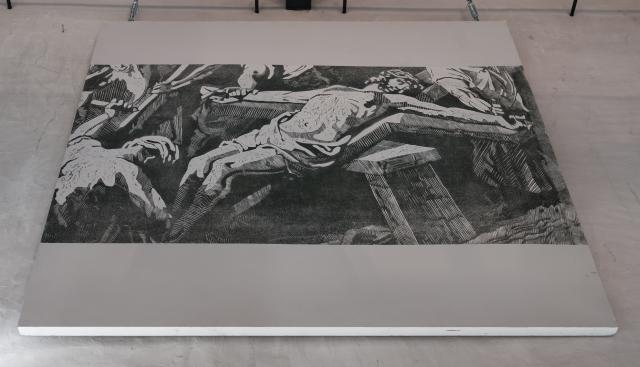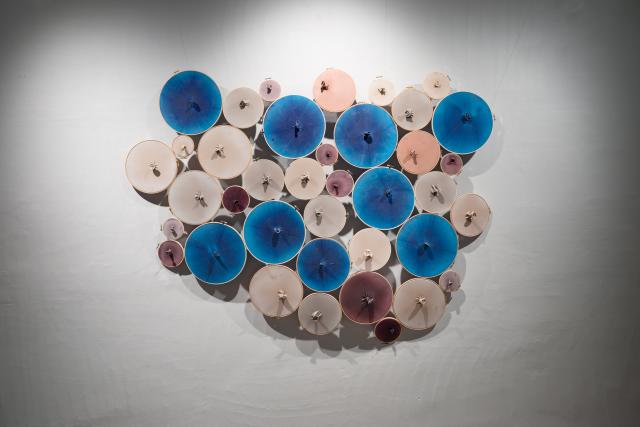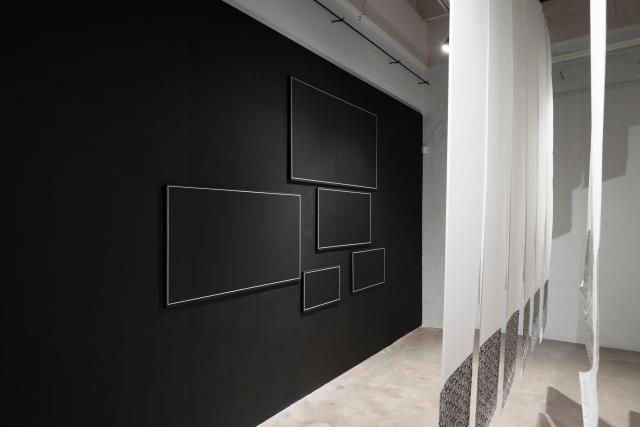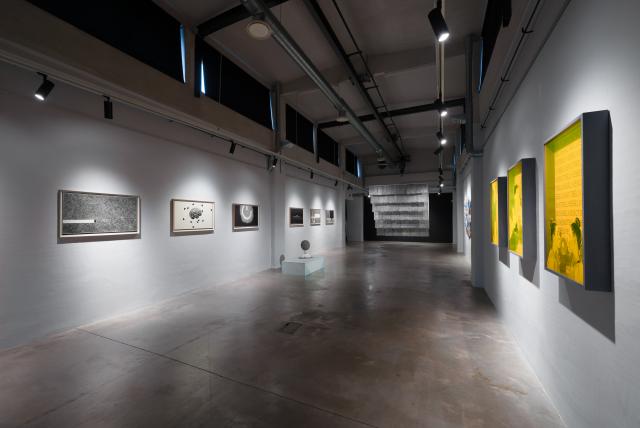English:
Artist Maarit Murka’s new solo exhibition “Bubbleties” is an exhibition that neither looks to the past nor the future – it senses the currents floating in the air in the present moment. In a world that seems open and full of possibilities, there is still a growing sense of skepticism, distrust, and suffocating isolation. Collective detachment and encapsulation have done their work – now only enjoyment or destruction remains.
Just as in the “angry nineties” when boundaries didn’t matter, the bubbles are waiting for the silence before the storm. Hands meant for doing, and feet made for walking – their true purpose should be found again. The hope that a greater boiling would happen all at once is not a goal in itself. When the air runs out, poking your head through the hood’s opening would bring a wave of oxygen that could carry the boat even without a stronger wind.
The exhibition unfolds as dialogues based on different themes, keywords, and motifs, attempting to convey the sensations and perspectives inherent in the art of bubbles. It is an attempt to step from bubble to bubble – without pricking the skin.
The exhibition marks, in the broadest sense, the pain points of internal and external reflexive twists, both personally and socially. Keywords like corona, war, altered budgets, and standardisation describe processes that have either initiated or intensified the bubbles – and which we must deal with daily. One can only guess how uncomfortable and painful fresh air might become when leaving the vacuum.
Estonian:
"Mullindad" on näitus, mis ei vaata ajas tagasi ega edasi, vaid tunnetab hetkel õhus olevaid vooge. Maailm, mis näiliselt on avatud ja kus võimaluste rohkus võtab silme eest kirjuks, jääb paljuski siiski skeptiliseks ja usaldamatuks umbseks kambriks.
Pealesurutud isolatsioon toimis ja kaugenemine ning kapseldumine on oma suurepärase töö teinud. Nüüd jääb vaid nautida ja lõhkuda.
Nii nagu „vihastel üheksakümnendatel“ piirid ei pidanud, on „mullindad“ ootuses, et kestab vaikus enne tormi. Käed, mis on mõeldud tegemiseks ja jalad, mis on mõeldud kõndimiseks – neile tuleks taas leida õige otstarve. Lootus, et korraga toimuks suurem keemine, ei ole eesmärk iseenesest. Õhu lõppedes pea kapuutsiaugust välja pistes, annaks hapnik lainetust, mis kannaks paati ka ilma suurema tuuleta. Väljapanek hargneb erinevatel teemadel, märksõnadel ja motiividel põhinevate dialoogidena, püüdes edasi anda „mullindate“ kunstile omast tunnetust ja vaatamisviise. Näitus markeerib kõige laiemas mõttes sees- ja seestütleva käände valupunkte nii isiklikus, kui sotsiaalses plaanis.
See on katse astuda mullist mulli ilma nõela pistmata. Märksõnad nagu koroona, sõda, muutunud eelarve, ühtlustumine – kõik need kirjeldavad „mullindaid“ käivitanud või intensiivistanud protsesse, millega tuleb hakkama saada. Võib vaid aimata, kuivõrd ebamugavaks ja valulikuks võib muutuda värske õhk, kui lahkuda vaakumist.
Mareli Reinhold analysis
Maarit Murka: Immersed in an Existential Sea of Bubbles
Maarit Murka’s new solo exhibition, "Mullindad", marks a notable departure from the artist’s well-known photorealistic painting style. This time, Murka moves toward graphics and linocuts. But this is not merely a technical shift, it is more of an internal turning point, a deep dive into the fragility of our era, into the sensing of a present that is unstable and, at times, anxious.
In previous projects, such as Contact (2014), Murka addressed identity, social tensions, and existential states. In "Mullindad" she continues along a similar path, but this time the gaze turns inward rather than outward. The exhibition centers on bubbles, forms that encapsulate the layered experiences of our contemporary moment: the aftermath of a pandemic, the omnipresence of the digital world, a quiet retreat into ourselves, and a growing sense of alienation.
The title of the exhibition alludes to bubbles, a playful activity, but in the artist’s hands, it becomes a metaphor. Here we encounter a quiet yet powerful inner pressure: skepticism, mistrust, solitude. Bubbles are simultaneously protective and restrictive, invisible yet palpable, they are the key motifs of our time, the environment in which we live.
Murka draws attention to the sensitivity of the moment and the transience of situations. Her work does not aim to freeze the past or predict the future; it is entirely anchored in the now. She conveys emotional states we feel right now: in a world teetering between pleasure and collapse, where becoming aware of and understanding our personal “bubble” becomes a matter of survival.
Ideas like “looking into a mirror,” “escaping the stagnation of daily life,” and “swimming in the fluid between yesterday and today” are deeply embedded in the visual and spiritual language of this exhibition. Murka’s works function as mirrors, they don’t offer answers but invite the viewer to meet themselves with honesty. A fluid presence flows through her images: between past and present, there are no clear boundaries, only a steady, sometimes restless current.
"Mullindad" does not present a clear narrative or deliver a final resolution. Rather, the exhibition invites us to linger in discomfort, to exist in that quiet space between movement and stillness. It is not a call to revolution, but a gentle whisper of survival - through awareness, through breath, through the choice not to pop the bubble just yet.
Murka invites us to navigate, not to rush out, but to learn to read the subtle fields of tension that surround us. It is a call to truly be present.
